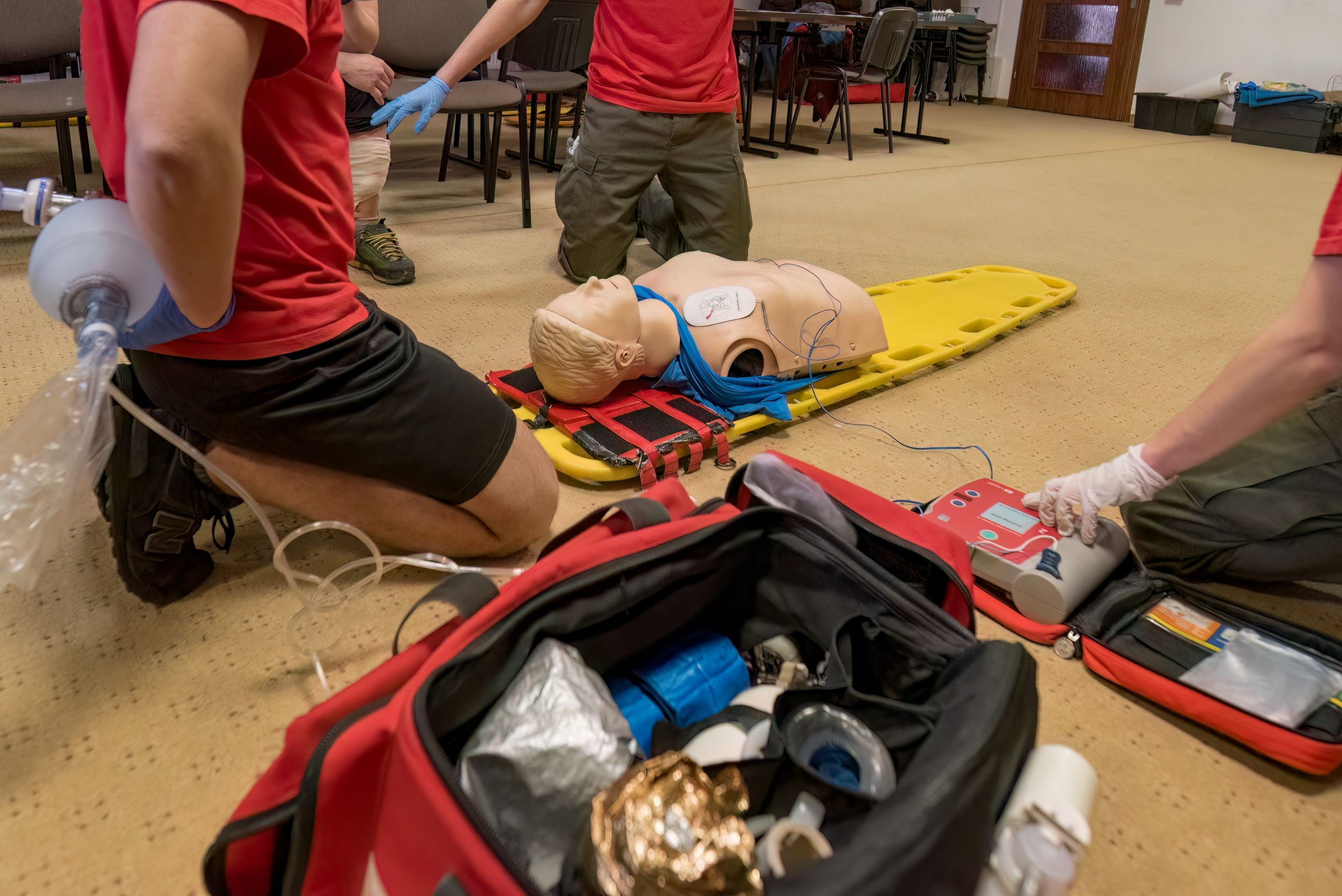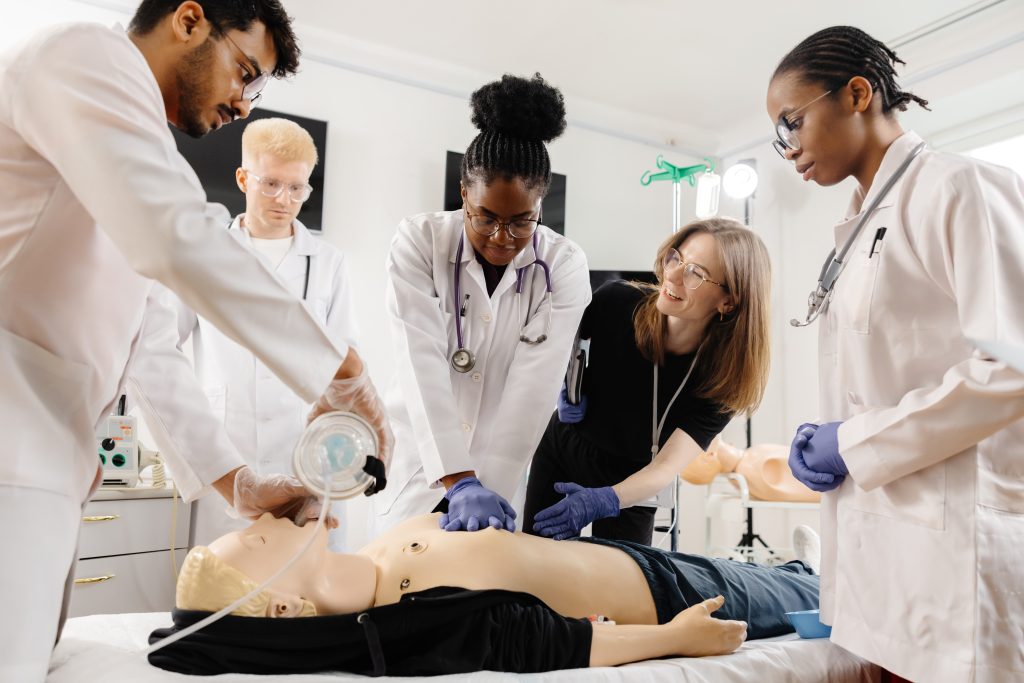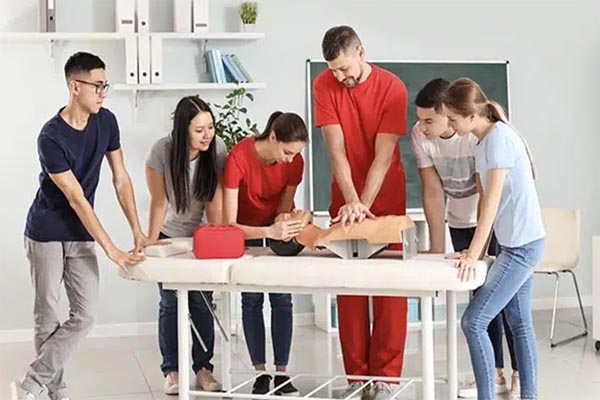
For nurses and medical staff, certain certifications aren’t just a good idea; they are a fundamental part of the job. Among the most critical is Basic Life Support (BLS). This certification is the foundation of emergency care, equipping healthcare professionals with the skills to respond to life-threatening situations. For those working in the dynamic healthcare environment of Austin, Texas, having an up-to-date BLS certification is not just a standard, it’s a necessity.
This comprehensive guide is designed specifically for healthcare professionals in Austin, from seasoned nurses to new medical assistants. We will explore what BLS certification entails, why it’s so important for your career, and how you can easily get certified or recertified right here in the heart of Texas. Our goal is to provide a complete resource that addresses all your questions, making the path to certification as clear as possible.
What is BLS Certification?
BLS stands for Basic Life Support. It is a standardized, often mandatory, training program for healthcare providers. Unlike general CPR courses, BLS training is specifically tailored to the unique environment of hospitals, clinics, and other medical settings. The curriculum covers a range of critical skills and knowledge points essential for saving lives.
The core of BLS training focuses on managing life-threatening medical emergencies. This includes everything from providing effective chest compressions and rescue breaths to using an automated external defibrillator (AED). It also covers how to recognize and respond to choking incidents. The skills taught in a BLS course are designed to be immediately applicable in a professional medical context.

Why is BLS Certification Essential for Nurses and Medical Staff in Austin?
In the fast-paced world of healthcare, every second counts. BLS certification ensures that you are prepared to act decisively and effectively when a patient’s life is on the line. For healthcare professionals in Austin’s bustling medical community, this preparedness is non-negotiable.
Here are a few key reasons why this certification is so vital:
- It’s a Professional Requirement: Most hospitals, clinics, and long-term care facilities in Austin require all clinical staff to hold a current BLS certification. It’s often a prerequisite for employment and a condition for maintaining your license or credentials.
- Saves Lives: This is the most important reason. BLS skills are directly responsible for improving patient outcomes during cardiac arrest, respiratory failure, or other sudden medical crises. Your ability to perform high-quality CPR and use an AED can make the difference between life and death.
- Team Cohesion and Protocol: BLS training provides a common framework for emergency response. When a team of healthcare professionals is all certified, they can work together seamlessly and efficiently, following established protocols to provide the best possible care. This is especially crucial in a busy emergency room or a critical care unit.
- Maintains Professional Competence: Healthcare is an ever-evolving field. Regular BLS recertification ensures that your skills are sharp and that you are up-to-date on the latest guidelines and best practices. It’s a commitment to ongoing professional development.
The Key Components of a BLS Course
A typical BLS course is a hands-on, interactive experience. It’s not just about memorizing facts; it’s about developing muscle memory and confidence. Here is a breakdown of what you can expect to learn:
- High-Quality CPR: You will be trained in the techniques for performing effective CPR on adults, children, and infants. This includes proper hand placement, compression depth, and rate. You will also learn about the importance of minimizing interruptions during chest compressions.
- Using an AED: You will gain practical experience in operating an automated external defibrillator. This includes learning how to attach the pads, interpret the device’s prompts, and safely deliver a shock when advised.
- Choking Relief: The course covers how to recognize and manage choking in conscious and unconscious victims of all ages. You will learn the correct abdominal thrusts for adults and the back blows for infants.
- Two-Rescuer Scenarios: BLS training emphasizes the importance of teamwork. You will practice scenarios involving two or more rescuers, learning how to coordinate your efforts for maximum efficiency.
- Bag-Mask Ventilations: Healthcare professionals often use a bag-mask device to provide rescue breaths. The course provides instruction on how to use this equipment effectively.
The Certification and Renewal Process in Austin
Getting your BLS certification is a straightforward process, and with the right provider, it can be a flexible and convenient experience. Most certifications are valid for two years. This two-year cycle ensures that healthcare providers regularly review and practice their skills, keeping them current with the latest guidelines.
When it’s time to renew, the process is similar to the initial certification. You can take a full course or a shorter recertification class, which is designed for those who have a current or recently expired BLS card. The recertification course quickly reviews the key concepts and focuses on a hands-on skills test to confirm proficiency.
Choosing a provider that offers convenient class schedules and a location near you is key. Look for a training center that has experienced instructors and provides plenty of hands-on practice opportunities. This ensures you’re not just getting a card, but genuinely mastering the life-saving skills.
Why Hands-On Training Matters
While online courses can be a great way to learn the cognitive portion of BLS, hands-on skills practice is absolutely non-negotiable. In a medical emergency, you don’t have time to think about the steps; you need to react. This requires muscle memory and confidence.
A quality BLS class will use manikins and practice AEDs to simulate real-life scenarios. You will receive immediate feedback from the instructor on your technique. This practical application is what truly prepares you to respond effectively under pressure. It’s the difference between knowing what to do and being able to do it flawlessly when it matters most.
The Role of BLS in Different Medical Roles
BLS is not a one-size-fits-all skill, and its application can vary slightly depending on your role within the healthcare system. Here’s a look at how different professionals utilize their BLS skills:
- Registered Nurses (RNs) and Licensed Vocational Nurses (LVNs): RNs and LVNs are often the first to recognize a patient’s change in condition. Their BLS skills are crucial for initiating the emergency response, performing CPR, and using an AED while waiting for advanced medical teams to arrive. They are typically the leaders in these initial moments.
- Medical Assistants: MAs working in clinics or doctor’s offices are on the front lines of patient care. A patient could suffer a sudden cardiac event during a routine check-up. An MA with a current BLS certification can immediately start life-saving interventions, a critical part of their role.
- Paramedics and EMTs: While these professionals have more advanced training, BLS is the foundation of their skill set. It is the bedrock upon which all other emergency care is built. A strong BLS foundation ensures they can perform the basic life-saving measures efficiently and effectively.
- Phlebotomists and Other Medical Staff: Even in roles that may not seem directly related to emergency care, having a BLS certification is a smart career move. Any medical professional who interacts with patients should be prepared to handle a sudden emergency.

BLS for Austin’s Medical Community
Austin, Texas, is home to a thriving and expanding healthcare sector. With major medical centers, specialty clinics, and a growing population, the demand for skilled and certified healthcare professionals is higher than ever. Hospitals like St. David’s Medical Center and Dell Seton Medical Center rely on their staff to be well-versed in BLS protocols.
Choosing a local Austin provider for your BLS certification means you’ll be learning from instructors who understand the local medical landscape and the specific needs of the community. It also makes recertification convenient, allowing you to easily book a class that fits your busy schedule without having to travel far.
Conclusion
BLS certification is more than just a piece of paper; it’s a vital credential that signifies your readiness to handle medical emergencies. For nurses and medical staff in Austin, TX, it’s an indispensable part of your professional toolkit. It ensures you have the skills and confidence to provide immediate, life-saving care when every second counts.
Taking the time to get certified or recertified is an investment in your career and, most importantly, in the well-being of your patients. Don’t wait until your certification expires. Prepare yourself for any situation and ensure you can respond with competence and calm.
Ready to take the next step in your professional journey? Contact CPR Classes Near Me today to book your BLS certification course. We offer flexible schedules and expert-led training right here in Austin, making it easy to get the skills you need to save lives.
FAQs About BLS Certification in Austin, TX
Q: What is the difference between CPR and BLS certification?
A: CPR (Cardiopulmonary Resuscitation) is a skill set focused on providing chest compressions and rescue breaths to someone in cardiac arrest. BLS (Basic Life Support) is a more comprehensive certification specifically designed for healthcare professionals. It includes CPR but also covers a broader range of topics, such as two-rescuer team dynamics, bag-mask ventilations, and the use of an AED in a professional setting. The BLS course is tailored to the specific needs and protocols of the healthcare environment.
Q: How long is a BLS certification valid?
A: A BLS certification is valid for two years from the date of completion. After two years, you must take a recertification course to renew your credentials. This regular renewal process ensures that your skills remain current and you are up-to-date with the latest emergency care guidelines.
Q: Is BLS certification required for all medical staff?
A: While specific requirements can vary by facility and role, BLS certification is a standard requirement for most clinical staff who provide direct patient care. This includes nurses, doctors, medical assistants, paramedics, and many others. It is often a condition of employment and a prerequisite for licensing in many healthcare fields.
Q: Can I get my BLS certification online?
A: Many providers offer a blended learning format where you can complete the cognitive, or knowledge-based, portion of the course online. However, a hands-on skills session with a certified instructor is a mandatory component for obtaining a full BLS certification. You must demonstrate your proficiency in skills like chest compressions and AED use in person.
Q: Where can I find a BLS class in Austin, TX?
A: You can easily find a BLS class in Austin, TX by searching for local training providers. Look for a company that offers flexible scheduling and a location that is convenient for you. Contact CPR Classes Near Me to get started.

Leave a Reply